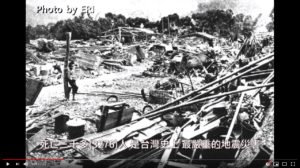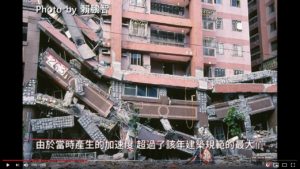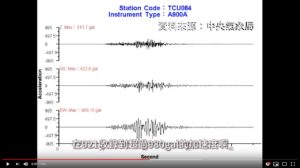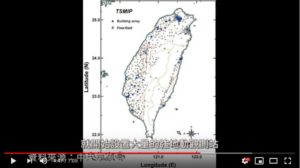"921 (Chi-Chi) Earthquake" 20th anniversary special topic
Ting-Wei WU (ESR7)
The “921 Earthquake” has its 20th anniversary this year (2019). The 921 Earthquake, also known as Jiji (Chi-Chi) Earthquake, was a 7.3 ML or 7.6–7.7 Mw earthquake which occurred in Jiji, Nantou County, Taiwan on Tuesday, 21 September 1999 at 01:47:12 local time, killing 2415 people.
Artist “不會冷”, who was also my classmate in the Department of Earth Sciences, National Central University, Taiwan, made a video review on how the pain of this event has turned into the energy of Taiwan’s progress and advancement in the past 20 years. I have obtained the author’s consent to translate part of his video to be presented in this post.
There are many large earthquakes in Taiwan, and the 921 Earthquake was not the most serious one. The 1935 Hsinchu-Taichung Earthquake (also called: Shinchiku-Taichū Earthquake, as it happened in the period when Taiwan was under Japanese rule) was the deadliest earthquake in Taiwan’s recorded history, claiming 3276 lives and causing extensive damage. Civil aid organizations were established, and earthquake preparedness drills also began to appear from this time in Taiwan.
The pain of the 921 Earthquake has turned into the pace of change
How about the 921 Earthquake in 1999? Because it happened more recently than the 1935 Hsinchu-Taichung Earthquake, the new changes have had a higher impact on us.
I. Differences in the earthquake-resistance of houses after generations
Because the ground acceleration generated at that time exceeded the maximum value of the building code that year, the 921 Earthquake prompted the modification of many relevant regulations:
1999 Earthquake happened, and the building regulations were revised
2002 New laws were amended
2003 If houses obtained construction licenses after 2003, they had to be constructed in a more earthquake-resistant way.
2006 The building regulations have taken the next step by taking into account the impact factors of faults and geological settings.
II. Search and rescue dogs
When the 921 Earthquake happened, many international search and rescue teams from 20 countries came to Taiwan to help, including more than 100 rescue dogs. At that time, Taiwan did not have its own rescue dogs. Therefore, after seeing the ability of international rescue dogs, the Fire Agency of Taiwan was eager to train Taiwan’s own rescue dogs as well.
Taiwan’s search and rescue dog team was successfully established in 2010, and had carried out missions not only in Taiwan, but also in countries such as Iran, Indonesia and Haiti. Nowadays, more than half of Asia’s UN-certified search and rescue dogs are from Taiwan.
III. Seismic intensity scales
When the 921 Earthquake took place, Taiwan’s seismic intensity scale only had levels from 0 (<0.8 gal) to 6 (>250 gal). However, strong-motion stations from the Central Weather Bureau of Taiwan recorded peak ground acceleration of more than 980 gal in the 921 Earthquake event. Therefore, the Central Weather Bureau invited earthquake experts and scholars to discuss whether it would be better to add a new level in the seismic intensity scale. Finally, the seventh level was added with 400 gal, which is a new specification only available after the 921 Earthquake event.
IV. Research achievements
The Central Weather Bureau established the Seismological Center in 1989, and began to set up a large number of strong-motion stations. 10 years later, the 921 Earthquake recorded unprecedented near-fault strong earthquake signals. These records have contributed greatly to the development of earthquake science, including many papers published on Nature and Science.
During the 921 Earthquake, the observation network in Taiwan only took 102 seconds to determine the epicenter, whereas the fastest foreign networks still needed 10 – 20 minutes. In October that year, the US Department of State specially called for the chief scientist of the US Geological Survey to go to the Congress to explain the outstanding achievements of Taiwan.
Location
- Jiji (Chi-Chi) Township, Nantou County, Taiwan












